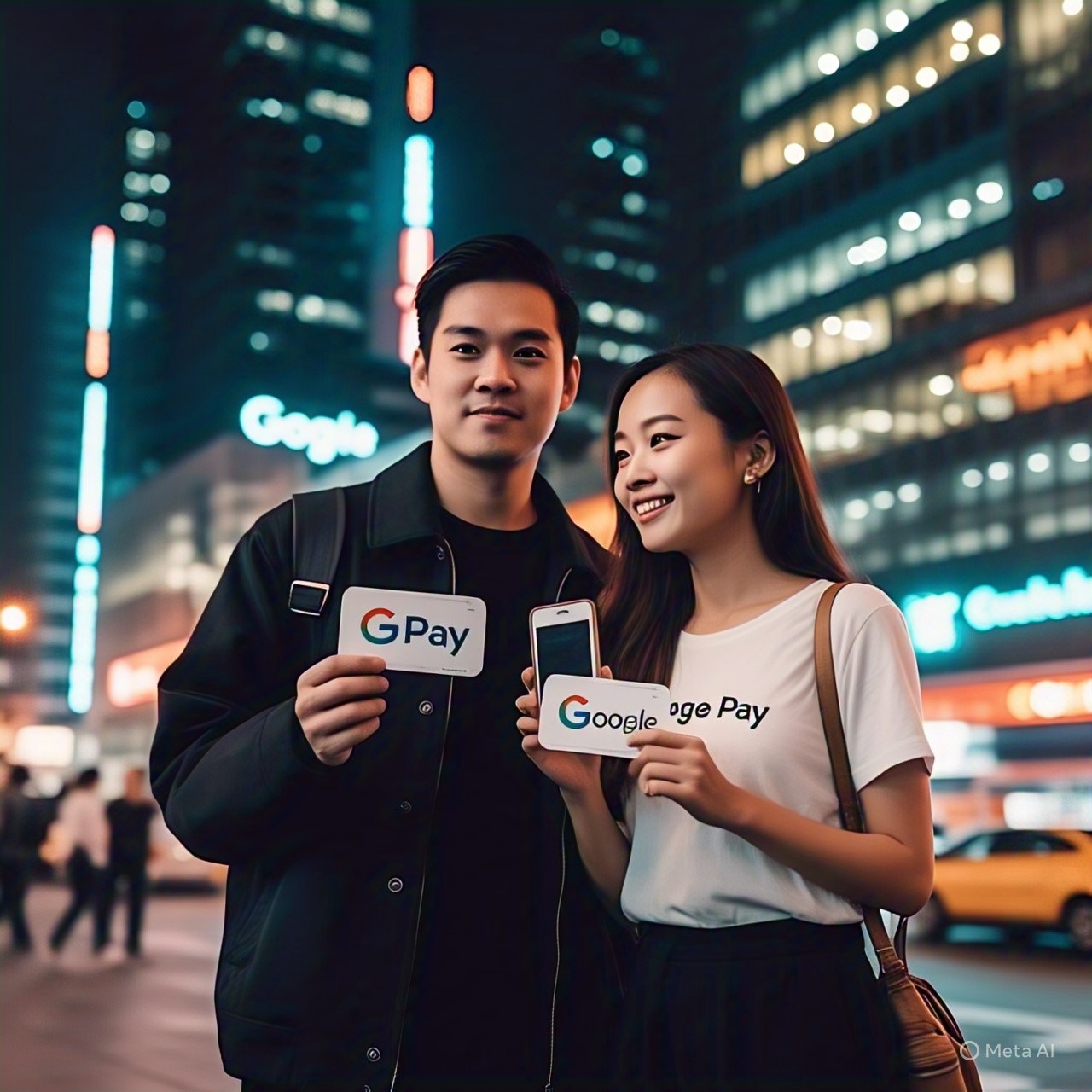
GPay vs Google Pay: Understanding the Differences and Similarities
In today’s fast-paced digital world, mobile payment systems are increasingly becoming a necessity for both businesses and consumers. Google Pay (formerly Android Pay) is one of the most popular digital wallets, and many people use the terms “GPay” and “Google Pay” interchangeably. But is there a difference between the two? In this article, we will break down what GPay and Google Pay are, how they work, and what you need to know about these digital payment systems.
What is Google Pay?
Google Pay is a comprehensive mobile payment platform developed by Google. It allows users to make online purchases, transfer money to friends and family, and pay at physical stores using their smartphones or other compatible devices. The service integrates with Google’s broader ecosystem, such as Gmail, Google Assistant, and Android, allowing users to manage their finances, keep track of loyalty programs, and store payment information securely.
Key Features of Google Pay:
- Contactless Payments: Google Pay supports tap-to-pay features, enabling users to make quick payments in physical stores using NFC (Near Field Communication) technology.
- Peer-to-Peer Transactions: Google Pay allows users to send money to family and friends easily, whether they’re in the same country or internationally.
- Online Shopping Integration: You can store payment information and make secure payments on various e-commerce platforms and apps, including Google Play, Uber, and more.
- Loyalty Cards and Tickets: Google Pay supports storing loyalty cards, gift cards, and even tickets for events or flights.
What is GPay?
GPay, short for Google Pay, is the informal shorthand for Google Pay, and the two terms refer to the same service. Historically, Google Pay has gone through several rebrands and transformations. In 2018, Android Pay merged with Google Wallet, and the service was rebranded as Google Pay. As a result, the name “GPay” started to be used more colloquially and in marketing materials. While “Google Pay” is the official term, “GPay” is a more casual, commonly used nickname.
For all practical purposes, “GPay” and “Google Pay” refer to the same payment system, with no significant differences in functionality. The main distinction is primarily in the branding and usage of the term in marketing campaigns.
Gpay vs Google Pay: Key Differences in Usage
Though they refer to the same platform, the usage of “Google Pay” versus “GPay” may vary in different contexts:
- Branding and Marketing: “GPay” is more commonly used in advertisements, promotional materials, and mobile applications. Google often uses this shorthand to make the product feel more accessible and user-friendly.
- User Interface: Regardless of the branding, users interact with Google Pay through the same app interface on Android and iOS. When you install the Google Pay app on your smartphone, it’s technically called “Google Pay,” but the logo and branding may feature the “GPay” abbreviation.
- Global Usage: In international markets, “Google Pay” is the more widely recognized name. However, as the platform becomes more mainstream and integrated into Google’s other services, the abbreviation “GPay” is gaining popularity.
The Benefits of Using Google Pay (GPay)
Google Pay offers a host of benefits, both for consumers and businesses. Here’s why it’s one of the leading mobile payment systems available:
1. Secure Payments
Google Pay uses advanced security features to protect users’ sensitive financial information. Payments are encrypted using tokenization, which means your actual credit or debit card number is never shared with merchants. Instead, a unique virtual account number is used for each transaction, ensuring that your information remains safe. Additionally, biometric authentication (like fingerprint recognition) can be used to authorize payments.
2. Convenience and Speed
One of the major advantages of Google Pay is the convenience it offers. For consumers, payments are fast and easy—whether you’re paying for groceries, grabbing coffee, or making an online purchase. Google Pay is accepted by millions of merchants globally, and the system is designed to make transactions as quick and smooth as possible. For businesses, accepting Google Pay means you can cater to customers who prefer using mobile payments, which is increasingly important as more people turn to digital wallets.
3. Integration with Google Services
Google Pay integrates seamlessly with other Google services, such as Gmail, Google Assistant, and Google Maps. For example, you can purchase a ticket to an event through Google Pay and store it in your Google account, where it will sync across all devices. Additionally, Google Pay can help users keep track of loyalty points, discounts, and offers from merchants. This integration creates a holistic, user-friendly experience that extends beyond simple payments.
4. International Accessibility
Google Pay supports cross-border transactions, which is particularly useful for travelers. Users can pay for services and goods internationally without needing to carry cash or worry about exchange rates. The app works with many local and international payment processors, making it easier for consumers to shop in foreign countries and for businesses to expand their customer base.
5. Managing Loyalty Programs and Offers
Another perk of using Google Pay is its ability to manage loyalty programs and promotional offers. You can store loyalty cards from stores, restaurants, and service providers directly within the app. Google Pay will automatically apply available discounts or points during checkout, offering a seamless and efficient experience.
Which One Should You Use: GPay or Google Pay?
Since GPay and Google Pay are essentially the same service, there is no need to choose between the two. Whether you refer to the service as Google Pay or GPay, you will be accessing the same app with the same functionality. The difference mainly lies in how the term is used in branding, marketing, and casual conversation.
That said, if you’re looking to download the app, make sure to search for “Google Pay” in the app store. The name “GPay” is a shorthand used within the app and marketing but is not typically used when searching for the app.
How to Set Up Google Pay (GPay)?
Setting up Google Pay is a straightforward process that can be completed in just a few steps:
- Download the App: Search for “Google Pay” in the Google Play Store (for Android devices) or the Apple App Store (for iOS devices) and download the app.
- Add Your Payment Information: Open the app and add your credit or debit card details. You can link multiple cards to your account and set one as your default payment method.
- Set Up a Security Feature: Google Pay offers several security features, including fingerprint authentication, PIN, or pattern lock. Setting up these features ensures your transactions are secure.
- Start Making Payments: Once your payment information is added, you can start using Google Pay to make payments at supported retailers, online stores, or send money to friends and family.
Conclusion
In essence, GPay and Google Pay refer to the same mobile payment platform, with “GPay” being the casual, shorthand name used in marketing. Whether you call it GPay or Google Pay, both terms represent a comprehensive, secure, and convenient digital wallet solution. This service allows users to make payments online and in stores, transfer money, and store loyalty cards—all from a single app.
For small business owners and consumers alike, Google Pay offers a host of benefits, including secure payments, speed, and seamless integration with other Google services. As the digital payment landscape continues to evolve, Google Pay is positioned to remain a dominant player, streamlining payments and offering new ways to engage with consumers.
If you haven’t already, consider integrating Google Pay (or GPay) into your payment system, whether you’re a consumer looking for convenience or a business aiming to keep up with the demand for contactless payments.
FAQs
1. Is there a difference between Google Pay and GPay?
No, GPay and Google Pay refer to the same platform. “GPay” is simply a shorthand version of Google Pay that’s often used in marketing materials.
2. Can I use Google Pay internationally?
Yes, Google Pay supports international transactions, allowing you to make payments and transfers in multiple countries.
3. Is Google Pay secure?
Yes, Google Pay uses advanced security features like tokenization, biometric authentication, and encryption to protect users’ sensitive financial information.
4. Can I store loyalty cards in Google Pay?
Yes, Google Pay allows you to store loyalty cards, gift cards, and tickets, making it a convenient way to manage rewards and discounts.
5. How do I add a card to Google Pay?
Simply download the app, open it, and follow the prompts to add your credit or debit card details. You can link multiple cards and set one as your default payment method.




